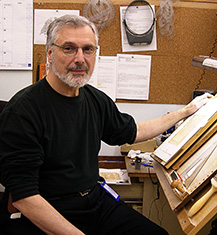John M. Mercanti
US Chief Coin Designer and Engraver - American Silver and Platinum Eagles - 50 State Quarters
John M. Mercanti was born on April 27, 1943 in the city of Philadelphia, Pennsylvania. In his younger days, John had grown an interest and talent for the arts and sculpting. After gaining more experience in his early career, he studied at the Pennsylvania Academy of Fine Arts to further his knowledge. He also attended the Philadelphia College of Art and Fleisher Art Memorial School, gaining even more experience at sculpting and engraving. Shortly after graduating from school, Mercanti began serving six years in the Pennsylvania Army National Guard before advancing his career to the US Mint. After his service, he worked as a professional illustrator.
In 1974 at the age of 31, Mercanti was hired to work at the US mint as an assistant sculptor and engraver. For many years, he assisted in the design and engraving of US coins under his mentor and current Chief Engraver Frank Gasparro. The two of them had become close friends over the years and John Mercanti gained valuable experience and insight into engraving US coins. In 1981, Gasparro retired from the Mint and Elizabeth Jones became the eleventh Chief Engraver. One of the first major coins that he designed was a ten dollar commemorative gold coin for the 1984 Los Angeles Olympics.
On July 9, 1986, Mercanti received the opportunity to make a big name for himself in official US coinage. The Liberty Coin Act was signed by US President Ronald Reagan, authorizing the production of commemorative coins for the Statue of Liberty and Ellis Island. At the same time, a new US bullion coin called the American Silver Eagle. This new coin was to be a 1 ounce, pure silver dollar depicting the walking liberty design that Adolph Weinman had created many years ago in 1916 for the Walking Liberty half Dollar. John Mercanti won an open competition for the coin design and was ultimately responsible for designing the reverse of the Silver Eagle. The reverse depicts a beautiful heraldic eagle holding arrows and an olive branch in each claw, with 13 stars above the eagle. The text "UNITED STATES OF AMERICA" and "1 OZ. FINE SILVER ~ ONE DOLLAR" appears along the rim. The national motto "E PLURIBUS UNUM" appears on a banner held in the eagle's beak.
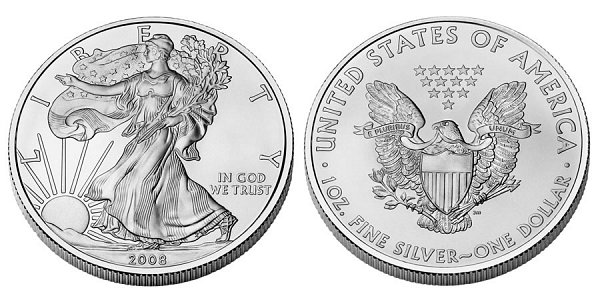
American Silver Eagle Dollar Bullion. Obverse designed by Adolph A. Weinman, reverse designed by John M. Mercanti.
After review by the Commission of Fine Arts, Mercanti's design was approved by James A. Baker III, the current Treasury Secretary. Production on this coin began on October 29, 1986 at the San Francisco Mint. The coin was then released for sale on November 24, 1986 and was bought out immediately due to extraordinary demand. Many collectors and numismatists in the coin collecting field deem this coin one of the most beautiful coin designs in US history. Since this coin was produced in pure silver, it was much easier for the mint to do wonders in producing perfect, highly-detailed specimens. This is because silver is such a soft metal, which produced little wear and tear on the striking dies and more details could be imprinted onto each coin.
Most of these coins were produced as normal brilliant uncirculated grade coins. The Mint also produced a smaller number of proof, burnished and even reverse-proof coins. Starting in 1995, the West Point Mint produced a 10th Anniversary American Eagle coin bearing it's "W" mint mark. In 2000, the West Point Mint began regularly producing these coins without the "W" mint mark, except during the production of special coins. All of these coins were produced specifically for collectors and people who deal in bullion. Individual coins could be bought in singles, usually in a protected plastic case lined with velvet and satin with a certificate of authenticity. These could also be bought in bulk in large green plastic cases containing 500 coins total - holding 25 plastic coin tubes containing 20 coins each. These coins are exceptional for precious metal investors. The value of silver coins changes in volatile fashion according to the prices of precious metal bullion. In this case, the American Silver Eagle is 1 troy ounce of pure silver, making it easy determine its value for trading and unnecessary for melting it down like people used to do with older silver pocket change. Besides, what collector wouldn't want at least one of these very large, heavy silver coins?
In the following years, John Mercanti would produce all kinds of various commemorative coins. Some of these included the 1986 Statue of Liberty Dollar coin and the 1989 Congress Bicentennial Five Dollar Gold coin. In the early 1990s, he produced the obverse for the 1990 Eisenhower Centennial silver dollar, 1991 Korean War Memorial Silver Dollar and Mount Rushmore Five Dollar coins. Mercanti's Statue of Liberty silver dollar actually became an inspiration for a new addition to the United States official Bullion Coins.
In 1997, Congress authorized the production of the American Platinum Eagle. These would be produced in various weights from 1/10, 1/4, 1/2 and 1 troy ounces of pure platinum. The face value denominations for these coins would be from $10, $25, $50 and $100. The $100 coin would be the largest coin denomination ever produced in the United States. The intrinsic value of these platinum coins would be tremendous since platinum metal is even more valuable and precious than gold.
John Mercanti was responsible for designing the obverse of the Platinum Eagle, which depicted the face of the statue of liberty, looking to the future. The original reverse, designed by Thomas D. Rogers, depicted a majestic eagle soaring above America. Like the Silver Eagle, these coins were produced just for the collector and the platinum bullion investor, and they are still produced to the present day. Again, both sides of this coin are considered some of the most beautiful designs ever produced by the Mint. A new reverse for this coin is produced each year along with uncirculated, burnished and proof versions of the coin. The normal uncirculated grade coins are typically produced in Philadelphia while the proof and special coins are produced in West Point. Very few of these are actually minted, so they are often quite rare. Typically less than 20,000 of each denomination are minted each year.
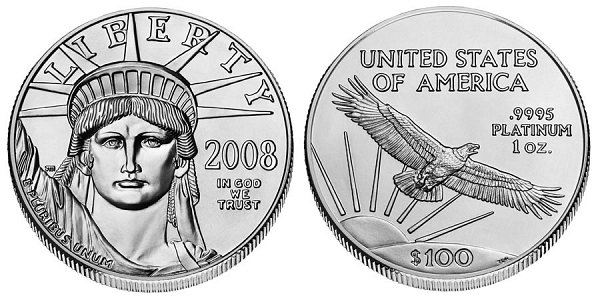
American Platinum Eagle Dollar Bullion. Obverse designed by John M. Mercanti, 1997 reverse designed by Thomas D. Rogers.
In 1991, Chief Engraver Elizabeth Jones resigned from the mint after working there for 10 years, and the position remained vacant for 5 years. In 1996, for the first time in US history, the Congress abolished the position and title of "Chief Engraver of the US Mint". Throughout the years since, John Mercanti continued designed all sorts of commemorative coins and medals at the Mint, including Congressional Gold Medals, the obverse of the 2005 John Marshall commemorative dollar and even produced the reverse of the Dr. Dorothy Height Congressional Gold Medal in just 9 days.
In addition to commemorative coins, Mercanti produced a number of designs for the 50 State Quarters Program. These quarters were minted between 1999 through 2009 and depicted a design on the reverse of the new 50 States and Territories Washington Quarters for each state, Washington DC and major US territories. John Mercanti was responsible for 7 designs for the US States of the Pennsylvania, North Carolina, Louisiana, Arkansas, Iowa, West Virginia and South Dakota. He produced so many different coins in his career that became minted for public circulation. In fact, he was responsible for designing and engraving over 100 coins in his career.
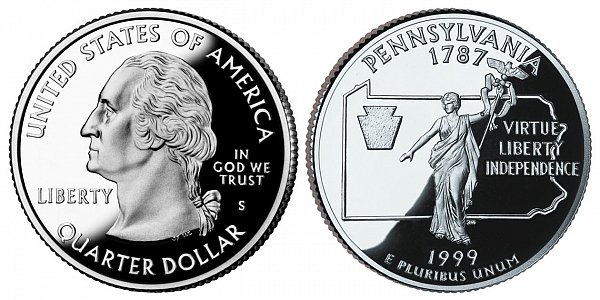
1999 Pennsylvania Quarter - Designed by John M. Mercanti.
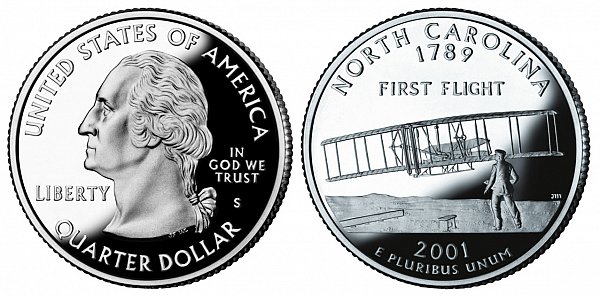
2001 North Carolina Quarter - Designed by John M. Mercanti.
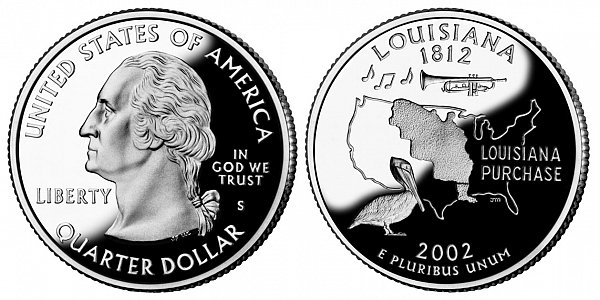
2002 Louisiana Quarter - Designed by John M. Mercanti.
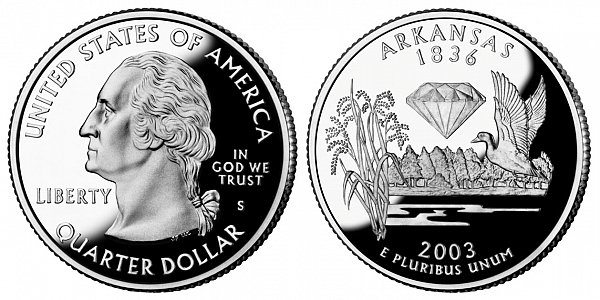
2003 Arkansas Quarter - Designed by John M. Mercanti.
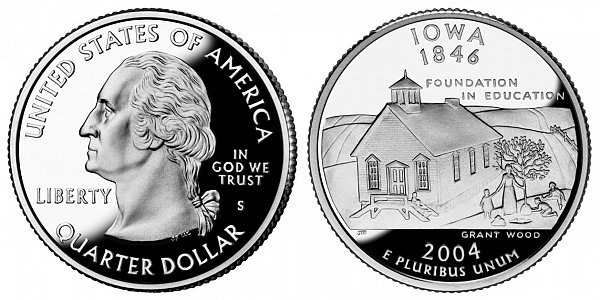
2004 Iowa Quarter - Designed by John M. Mercanti.
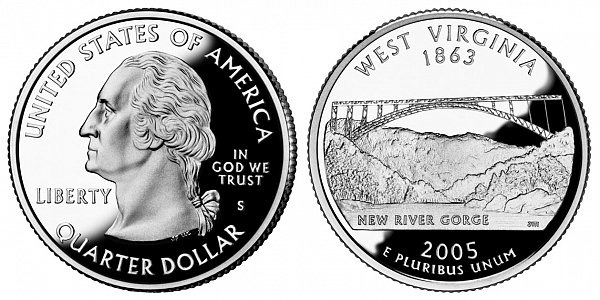
2005 West Virginia Quarter - Designed by John M. Mercanti.
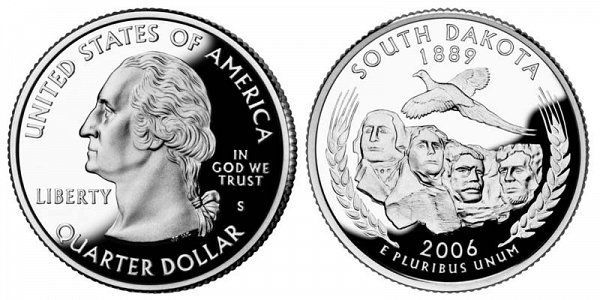
2006 South Dakota Quarter - Designed by John M. Mercanti.
On May 19, 2006, John was appointed to the title of Supervisor of Design and Master Tooling Development Specialist at the US Mint, which was basically the same as being the 12th Chief Engraver of the US Mint, but with another name and slightly different roles. It wouldn't be until February 3, 2009 when Edward C. Moy, the current Mint Director, would resurrect the actual title and appoint John Mercanti as "Chief Engraver", even though the presidentially appointed position was abolished. This promotion is now considered temporary and can only be extended one year at a time for up to a maximum of 5 years. Quite simply, he certainly earned the title.
Mercanti designed and engraved more coin designs than any other engraver in US Mint history, and is perhaps the most experienced and accomplished of the great engravers of the Mint. He also served for an astounding 37 years. The only three engravers who served longer were the great George T. Morgan, who served 48 years, William Barber, who served 47 years and Mercanti's mentor Frank Gasparro, who served 39 years. In addition, John was also one of the first to design coins using advanced digital computers and artistic editing software at the Mint, a tremendously revolutionary advance in the coin designing practice.
On December 30, 2010, John retired from the US Mint as the 12th and final Chief Engraver and Sculptor of the US Mint. This position remains vacant ever since. A little over a year later, he joined up with Goldline International, a major coin and bullion company, and became their paid spokesperson on June 28, 2011. You may have seen him on TV commercials representing the company. In the numismatic field, Mercanti is considered a modern legend who produced fantastic and highly popular coins, raising the bar for future coin designs.
